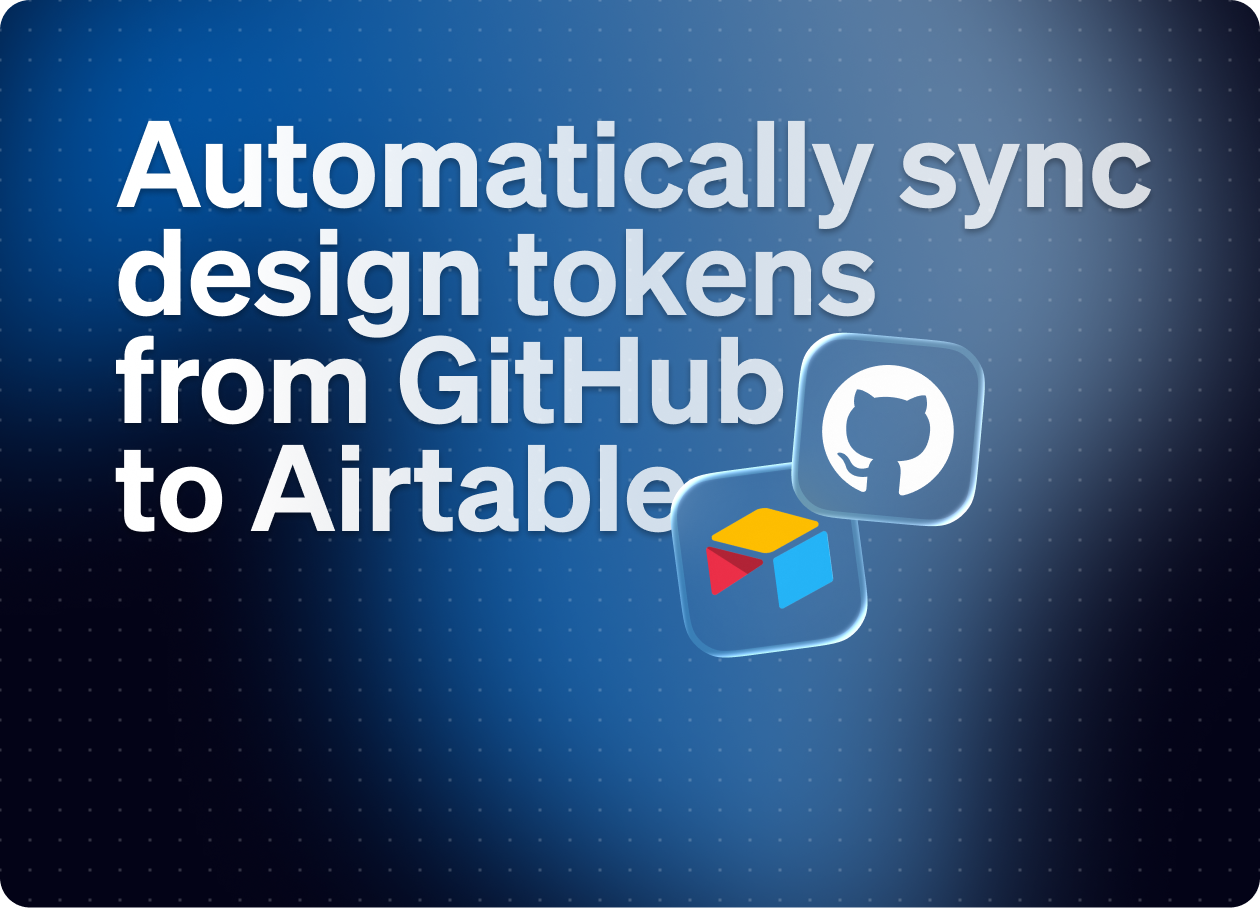Gamechanger: Automatically sync design tokens from GitHub to Airtable 🤯
Step-by-step guide with the video
👋 Get weekly insights, tools, and templates to help you build and scale design systems. More: Design Tokens Mastery Course / Podcast / My Linkedin
Stop manually copying token values from your repo to documentation. Here's how to automate the whole thing.
This automated design token system will save you hours and hours of manual work.
What you'll get ✅
Automated sync from GitHub token files to Airtable (you can also use Tokens Studio and upload tokens from Figma)
Light/Dark theme values that resolve to actual hex codes
Component categorization that makes sense (Button, Input, Text, etc.)
Team collaboration - everyone gets updated tokens instantly
Prepare your
GitHub account and repository where you store design tokens (free works fine)
Airtable account (free works fine)
Cursor IDE (PRO version, highly recommended)
PS. I’m not affiliated with any of the mentioned tools.
Don't worry if you're new to GitHub or coding - this guide explains everything step by step.
🔗 Get the package here →
Step 1: Install and set up Cursor 💻
Go to cursor.com
Download and install like any other app
Open it.
Connect Cursor to GitHub
Press
Ctrl/Cmd + Shift + Pto open command paletteType: "GitHub: Sign in" and press Enter
Click "Allow" when GitHub opens in browser
Authorize Cursor to access your GitHub account
Return to Cursor - you should see "Signed in to GitHub" confirmation
✅ Cursor is now connected to your GitHub account!
Step 2: Your GitHub repository 📁
Probably, you already have your GH repository with your design tokens. If not, follow the video, and let’s create it together.
Once you are done, clone it to Cursor.
Clone repository to Cursor
In your GitHub repo, click the green "Code" button
Copy the HTTPS URL (example:
https://github.com/yourusername/design-tokens-sync.git)Go back to Cursor
Press
Ctrl/Cmd + Shift + P→ type "Git: Clone" → press EnterPaste your repository URL and choose a folder on your computer
Click "Open" when cloning is complete
✅ Your repository is now connected to Cursor!
Step 3: Set up Airtable 🗂️
Go to airtable.com and log in (create an account if needed)
Click "Create a base"
Choose "Start from scratch"
Name it: "Airtable Sync" (or whatever you want)
Click "Create base"
Set up your table structure
Rename the default table to
Semantic design tokensDelete default fields and create these exactly:
Token name (Single line text)
Component (Single line text)
Light value name
Light value
Dark value name
Dark value
Usage
You can change the names (or even add more columns), but then you will need to instruct Cursor or manually modify the scripts so that the script knows how the values from JSON should map in Airtable.
Get your Airtable credentials
Get your Base ID:
Look at the URL in your browser while in your base
Copy the part starting with "app" (example:
appXXXXXXXXXXXXX)Save this - you'll need it later
Get your API token:
Click "Create new token"
Name it: "Design Tokens Sync"
Add these permissions:
data.records:readdata.records:writeschema.bases:read
Add access to your base (select your "Design Tokens Hub")
Click "Create token"
Copy the token (starts with
pat) - Save this safely!
🔒 Keep your API token secret - it's like a password!
Step 4: Get or create automation scripts in Cursor
Copy the package from my GitHub repo or instruct Cursor to check your environment variables from GitHub and sync your design tokens from GitHub to Airtable.
Be careful about your column names in Airtable (they have to fit if you are using my scripts).
Step 4: Add Airtable credentials to GitHub
This is where your Airtable credentials go - as GitHub Secrets for automation:
Access GitHub secrets
Go to your GitHub repository on github.com
Click "Settings" tab (far right in tab bar)
In left sidebar, click "Secrets and variables"
Click "Actions"
Add your credentials
Click "New repository secret"
Add first secret:
Name:
AIRTABLE_API_KEYSecret: Paste your API token (starts with
pat)Click "Add secret"
Click "New repository secret" again
Add second secret:
Name:
AIRTABLE_BASE_IDSecret: Paste your Base ID (starts with
app)Click "Add secret"
Step 5: Test
Watch it work and check the results in your Airtable base. If the values are not correct, instruct Cursor to check your structure again. You can also test the workflow with a sample design token.
Step 6: Configure component categories on Airtable
The system automatically categorizes tokens:
button.primary→ Buttontext.heading→ Textinput.border→ Input
After the first sync, you can change the column type to "Single select". Airtable will automatically create a colored dropdown for all your components. Now you can also change the view and group design tokens by component.
🎊 Wohoo, you've built something amazing!
Next week we will create GitHub actions to automatically check for changes in Figma and GitHub.
Enjoy the weekend. ✌️
💎 Community Gems
Quantum - FREE Design System v.0.3
Quantum provides a comprehensive, tokenized UI library designed to bridge the gap between designers and developers.
🔗 Link
Apple introduces a delightful and elegant new software design
Ohh, a lot of debates around accessibility, futuristic design decisions this week. I love the style and the direction, but we definitely need updates, so we will be able to read 🙃
🔗 Link
OpenAI added Connectors to ChatGPT — real-time access to Google Drive, GitHub, and SharePoint inside the chat.
🔗 Link
Another take on naming design tokens
by David Aerne
🔗 Link





